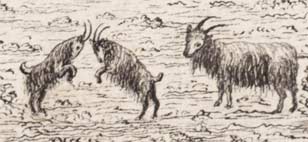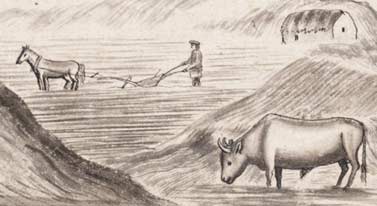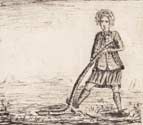John Home's Survey of Assynt in 1774
Assynt - history and context

The parish of Assynt historically was a Clan Macleod homeland, but from 1695 it had been taken over by Mackenzie lairds, sequestered in 1739, and purchased at a public sale by Lady Strathnaver in 1757. After Lady Strathnaver died in 1766, closely followed by her husband ( William 18th Earl of Sutherland ) in 1767, the estate passed to the one-year old Elizabeth, Countess of Sutherland. During her minority the Sutherland Tutors dealt with business affairs, and Captain James Sutherland acted as general commissioner, in particular organising new surveys of the estates. In 1771 the Edinburgh surveyor James Kirk was appointed to survey the East coast parishes, and although he made a start in Assynt in 1773, he fell ill and died later that year.

Then as now, for its landowners, Assynt was a relatively remote and inhospitable country, with thin, poor soils, and few economic resources. Its only real exports were black cattle (delivered to drovers), herring and salmon. Population increase throughout the 18th century had placed steadily greater pressures on the land; the estimated population of the parish in 1774 was 1718 people, which had risen to 2,395 people by 1801. John Home's Survey confirms a general pattern of densely populated coastal farms, growing some crops for subsistence but pushing against the limits of their resources, with more sparsely populated inland farms devoted to raising cattle.

The early 1770s were also very difficult years, with recurring famines, and Thomas Pennant, travelling through Assynt in 1772, reported starvation conditions. Emigration was a real and constant factor, and although it was checked for a decade by the American War of Independence from the mid-1770s, it sharply increased thereafter. Yet at this time the Sutherland Tutors opposed emigration, and were sharply critical of the tacksmen who collected their rents, yet often promoted emigration. John Home's Survey of Assynt allowed a crucial check to the power of these tacksmen, reorganising the parish into a larger number of conjointly owned farms. The 1775 rents were only slightly increased, but in being based on a fairer distribution of land and its potential, were allocated differently and reportedly were well-received by the tenants.
![]()
Introduction and estate surveys | Assynt - history and context | John Home (1733/4-1809) and his survey
